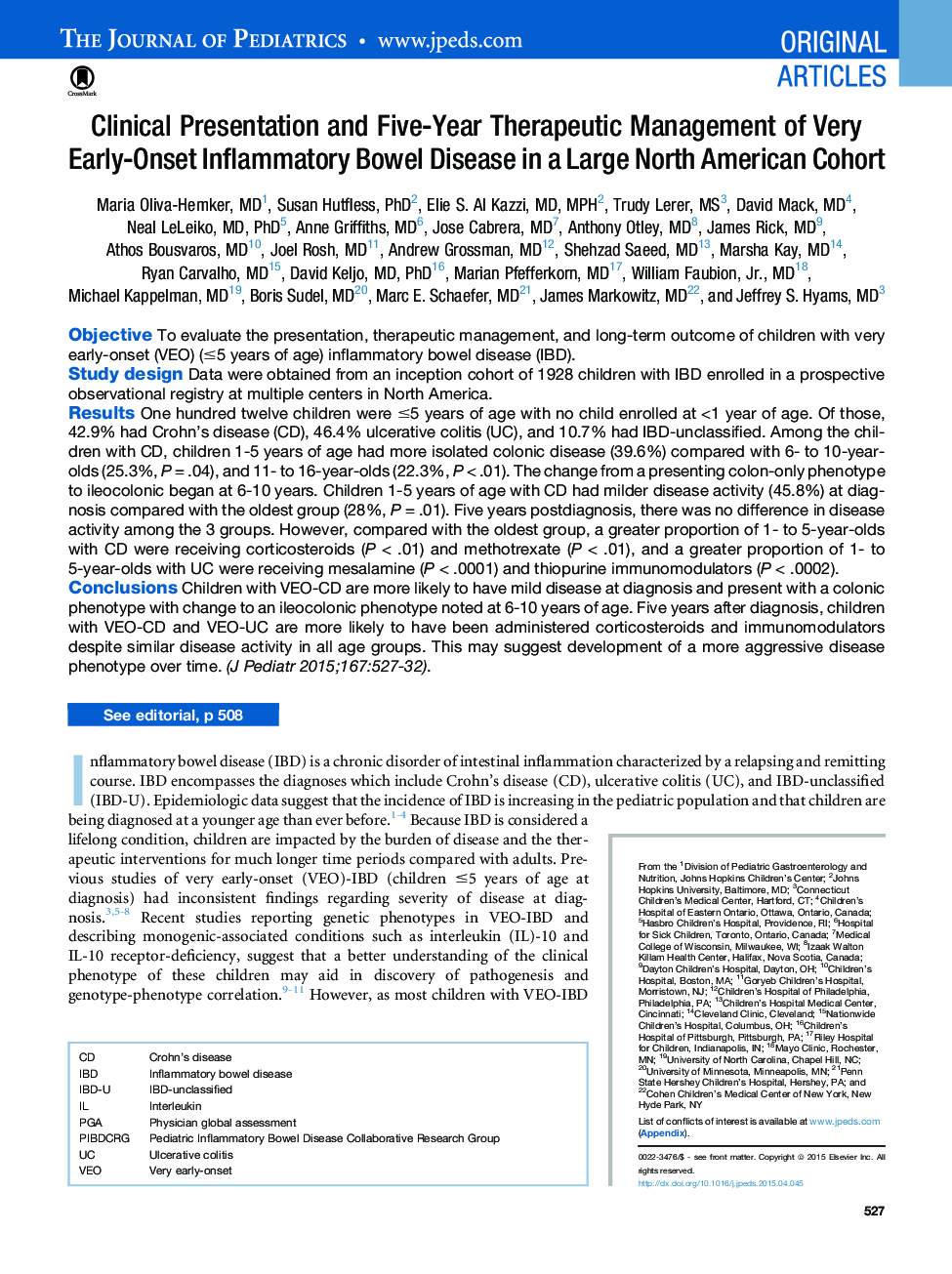| کد مقاله | کد نشریه | سال انتشار | مقاله انگلیسی | نسخه تمام متن |
|---|---|---|---|---|
| 6220909 | 1607439 | 2015 | 9 صفحه PDF | دانلود رایگان |
ObjectiveTo evaluate the presentation, therapeutic management, and long-term outcome of children with very early-onset (VEO) (â¤5 years of age) inflammatory bowel disease (IBD).Study designData were obtained from an inception cohort of 1928 children with IBD enrolled in a prospective observational registry at multiple centers in North America.ResultsOne hundred twelve children were â¤5 years of age with no child enrolled at <1 year of age. Of those, 42.9% had Crohn's disease (CD), 46.4% ulcerative colitis (UC), and 10.7% had IBD-unclassified. Among the children with CD, children 1-5 years of age had more isolated colonic disease (39.6%) compared with 6- to 10-year-olds (25.3%, P = .04), and 11- to 16-year-olds (22.3%, P < .01). The change from a presenting colon-only phenotype to ileocolonic began at 6-10 years. Children 1-5 years of age with CD had milder disease activity (45.8%) at diagnosis compared with the oldest group (28%, P = .01). Five years postdiagnosis, there was no difference in disease activity among the 3 groups. However, compared with the oldest group, a greater proportion of 1- to 5-year-olds with CD were receiving corticosteroids (P < .01) and methotrexate (P < .01), and a greater proportion of 1- to 5-year-olds with UC were receiving mesalamine (P < .0001) and thiopurine immunomodulators (P < .0002).ConclusionsChildren with VEO-CD are more likely to have mild disease at diagnosis and present with a colonic phenotype with change to an ileocolonic phenotype noted at 6-10 years of age. Five years after diagnosis, children with VEO-CD and VEO-UC are more likely to have been administered corticosteroids and immunomodulators despite similar disease activity in all age groups. This may suggest development of a more aggressive disease phenotype over time.
Journal: The Journal of Pediatrics - Volume 167, Issue 3, September 2015, Pages 527-532.e3
